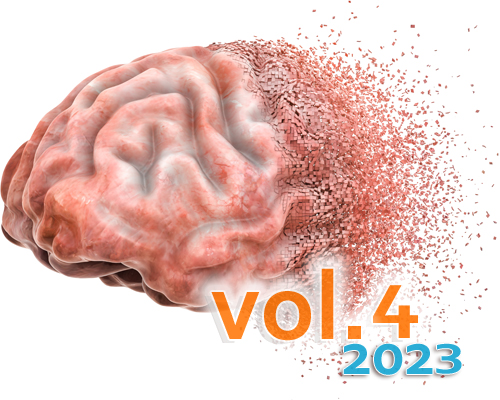From amaurotic idiocy to biochemically defined lipid storage diseases: the first identification of GM1-Gangliosidosis
DOI:
https://doi.org/10.17879/freeneuropathology-2023-4845Keywords:
Lipid storage disease, GM1-Gangliosidosis, Amaurotic idiocy, Tay-Sachs-Disease, Beta-galactosidaseAbstract
On February 23rd 1936, a boy-child (“Kn”) died in an asylum near Munich after years of severe congenital dis-ease, which had profoundly impaired his development leading to inability to walk, talk and see as well as to severe epilepsy. While a diagnosis of “Little’s disease” was made during life, his postmortem brain investiga-tion at Munich neuropathology (“Deutsche Forschungsanstalt für Psychiatrie”) revealed the diagnosis of “amaurotic idiocy” (AI). AI, as exemplified by Tay-Sachs-Disease (TSD), back then was not yet understood as a specific inborn error of metabolism encompassing several disease entities. Many neuropathological studies were performed on AI, but the underlying processes could only be revealed by new scientific techniques such as biochemical analysis of nervous tissue, deciphering AI as nervous system lipid storage diseases, e.g. GM2-gangliosidosis. In 1963, Sandhoff & Jatzkewitz published an article on a “biochemically special form of AI” reporting striking differences when comparing their biochemical observations of hallmark features of TSD to tissue composition in a single case: the boy Kn. This was the first description of “GM1-Gangliosidosis”, later understood as resulting from genetically determined deficiency in beta-galactosidase. Here we present illus-trative materials from this historic patient, including selected diagnostic slides from the case “Kn” in virtual microscopy, original records and other illustrative material available. Finally, we present results from genetic analysis performed on archived tissue proving beta-galactosidase-gene mutation, verifying the 1963 interpre-tation as correct. This synopsis shall give a first-hand impression of this milestone finding in neuropathology.
Metrics
Additional Files
Published
How to Cite
Issue
Section
License
Copyright (c) 2023 Burkhard S Kasper, Thomas Christian, Anne Albers, Ekkehard Kasper, Konrad Sandhoff

This work is licensed under a Creative Commons Attribution 4.0 International License.
Papers are published open access under the Creative Commons BY 4.0 license. This license lets others distribute, remix, adapt, and build upon your work, even commercially, as long as they credit you for the original creation. Data included in the article are made available under the CC0 1.0 Public Domain Dedication waiver, unless otherwise stated, meaning that all copyrights are waived.


















